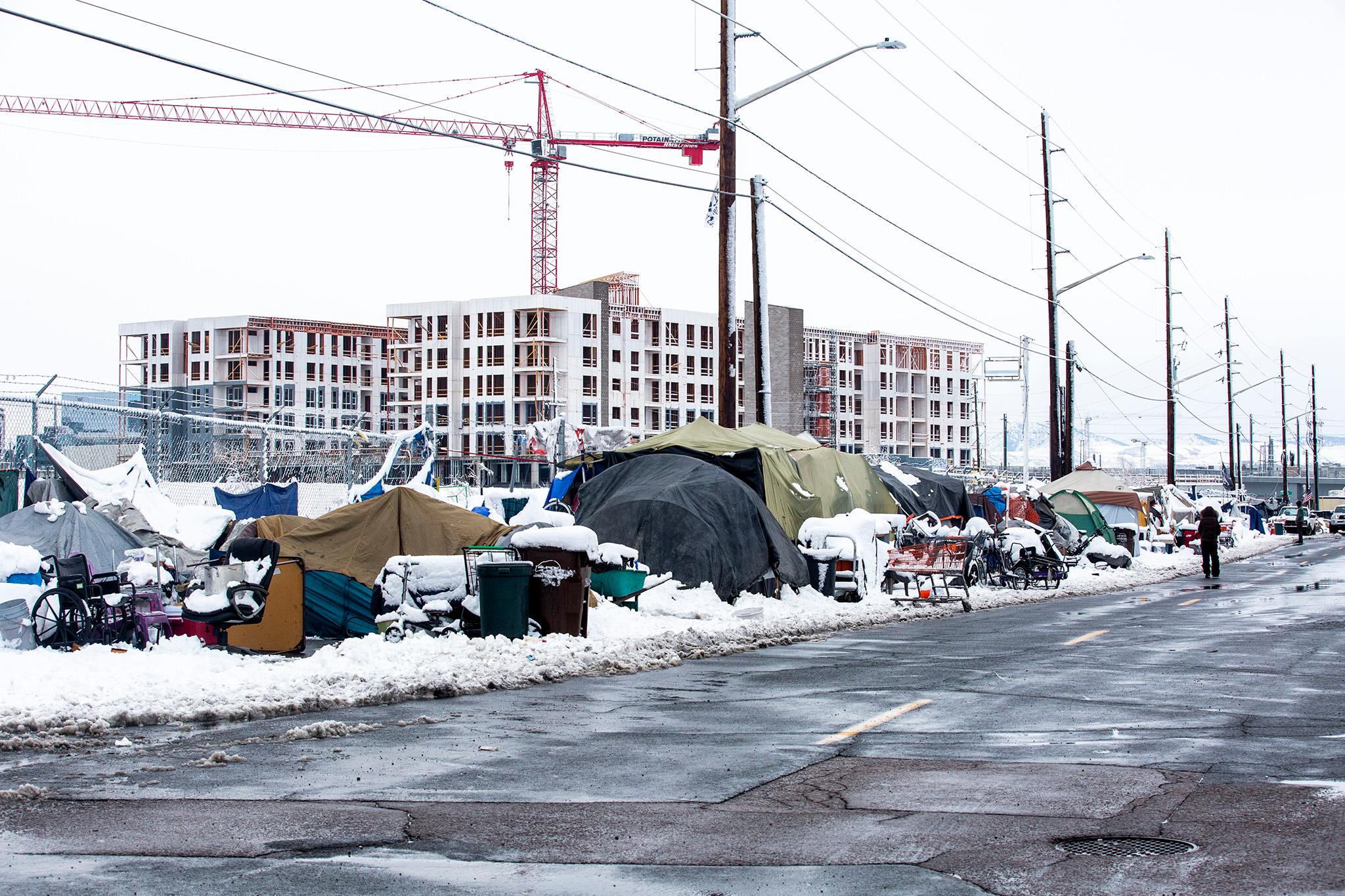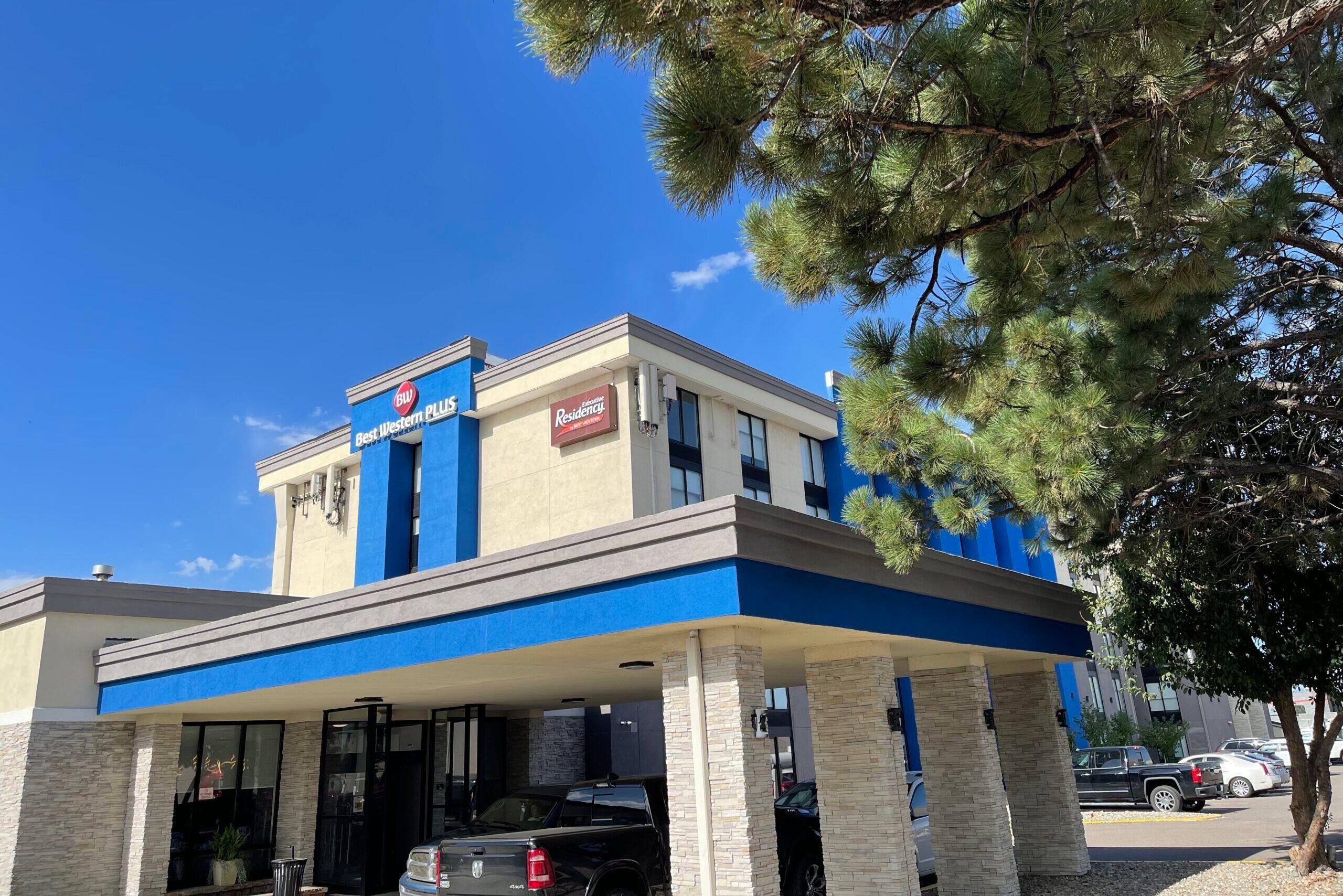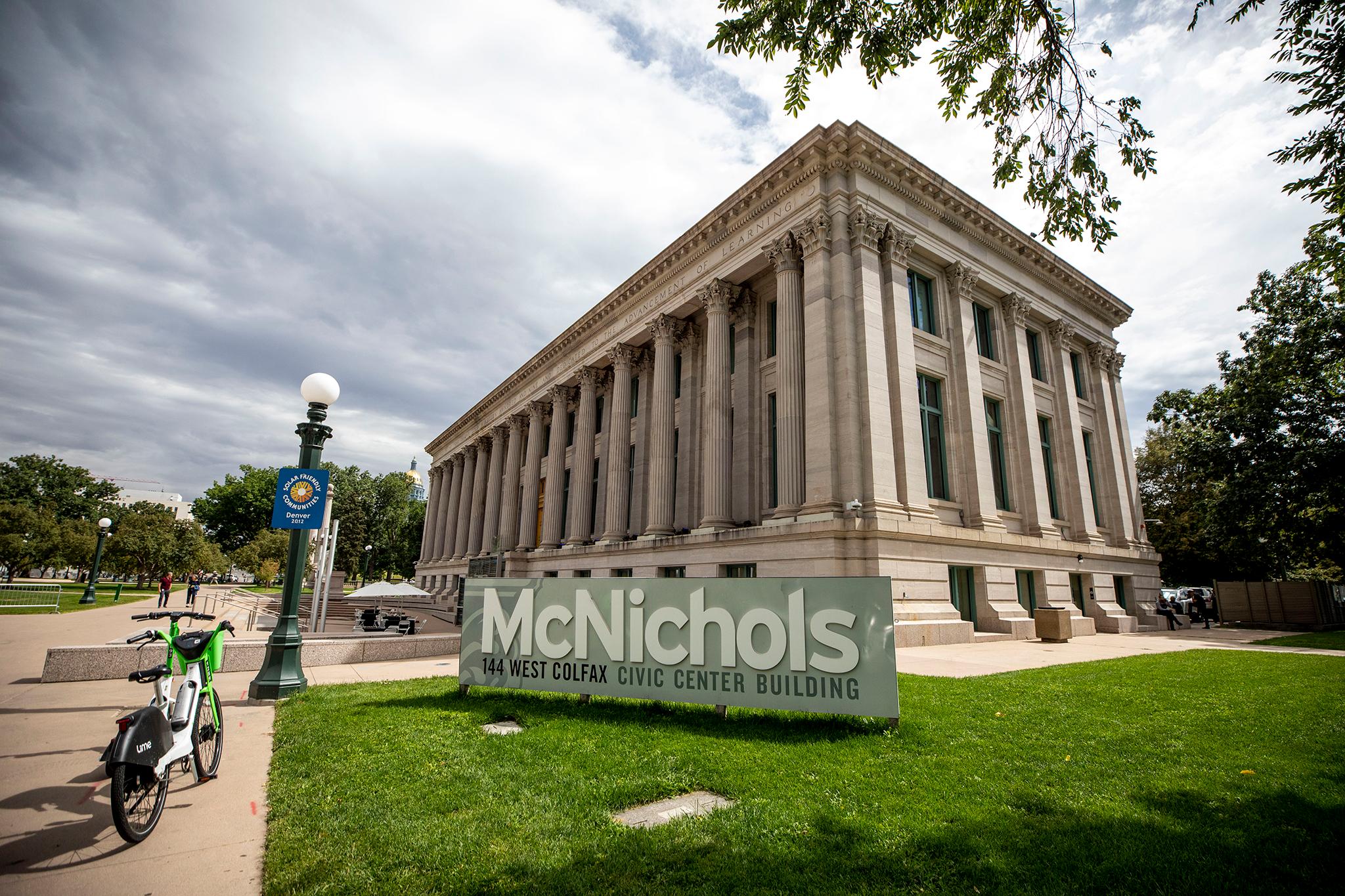Denver's new Cold Weather Sheltering Plan for people experiencing homelessness acknowledges the many obstacles of turning buildings not intended to be shelters into them.
There are pre-booked events that might need to be canceled at Denver Arts and Venues-run spaces.
Some city-owned buildings come with insurance liabilities, egress issues and fire risks that would need to be addressed.
Sheltering people at recreation centers for the long term, as the city has done before, could cause legal troubles. Dedicated parkland is generally not allowed to be used for other purposes.
Finally, using the Coliseum for emergency winter shelter might not work this year because the massive facility could shelter people as part of Mayor Mike Johnston's effort to move 1,000 people from encampments indoors.
Denverite obtained the document in which the city lays out these concerns and confirmed its legitimacy with the Office of Emergency Management. The plan was approved on Sept. 22.
Here are the basics of the cold weather plan.
The Department of Housing Stability, with support from the Office of Emergency Management, will be tasked with creating a policy about how to activate the shelters.
"HOST will lead a coordination call several days prior to an expected cold weather shelter activation to confirm staffing, facilities, and other details in time for mobilization," the document states.
Emergency shelters would be opened for unsheltered people experiencing homelessness on nights -- and just nights -- when other shelters are closed and certain weather events take place. Unless there are extenuating circumstances, these shelters would not be operated 24/7 like other homeless shelters are.

One of the following conditions would trigger the opening of emergency shelters:
- Overnight low temperatures drop to 20 degrees or below;
- There's a wind chill advisory, watch or warning;
- Or there are two or more inches of snow forecast.
The city estimates approximately 60 nights between December and March will see temperatures below 20 degrees.
What spaces could be used as emergency winter shelters?
The priority sites are two hotels -- one Denver owns and one it doesn't yet.
The first 100 beds will be located in the ballroom of the recently acquired Best Western hotel in Central Park, where the city is temporarily housing people moved from the 8th Avenue and Logan Street encampment. The ballroom should be ready by mid-October.
Another 300 beds will be located in the ballroom of a "soon to be procured hotel," probably in mid-November.

The Cold Weather Shelter Plan mentions three sites, each with problems, that would be used second, if the first ones are full or don't pan out.
The city could put 200 beds at the McNichols Civic Center Building and 500 beds could be set up at the Coliseum, assuming they're not programmed. Another 200 beds could go in the Wellington E. Webb Municipal Office Building's atrium.
If all the first- and second-tier venues are booked or full, recreation centers could be used again for short-term emergency shelter.
Using the McNichols or Webb buildings, the Coliseum or rec centers all come with headaches -- though all have been used as shelters in recent years.
Using either the Webb building or the McNichols building as shelter puts insurance at those buildings "and potentially other city facilities" at risk, according to the plan.
Both the McNichols Building and the Coliseum are booked through winter, and "canceling reservations poses a legal risk and reputational impacts to [Denver Arts and Venues]," the document states.
Shifting between sheltering people and throwing events is tough on staff. Arts and Venues would not be able to fully staff either as shelter and would need additional support. Both buildings would also need showers added.

The city expects the historic McNichols Building would incur several hundred thousand dollars in damages if it's converted into a shelter.
The Webb Building comes with its own problems. It could only be used as overnight shelter, since it houses multiple city departments by day. Even so, some city services could still be disrupted.
The building is also being used for elections between Oct. 23 and Nov. 8. Ongoing construction at the building could prevent guests from using the first-floor bathroom and the second-floor bathroom might need to be used.
Recreation centers have been used as emergency shelters before -- including earlier this year for migrant arrivals -- but when that happens, existing services are suspended.
"Prolonged shelter use poses significant legal risk within City Charter," the documents state.
And the city emphasizes that in all but the most extreme cases, rec centers in neighborhoods with "significant equity considerations should not be used if at all possible."
Perhaps the most surprising obstacle facing any building is that the document acknowledges that the Coliseum "may be needed for the House1000 effort."
The cold weather sheltering plan documents do not detail how the Coliseum would be used as part of the mayor's ongoing plan to shelter or house people. The mayor has also not publicly spoken about how the coliseum might feature in his plans.
And the city actually using the facility as part of Johnston's effort to bring 1,000 people inside is unlikely, according to the Office of Emergency Management.
Johnston has said his goal is to get people into converted motel rooms, permanent housing, existing rental units and micro communities with tiny homes and pallet shelters where they have a lock, a key and a mailing address. But he is also counting people who move from encampments into group homeless shelters for at least 14 days toward his House1000 goal.
As of Oct. 6, the city has successfully sheltered 104 people in its House1000 campaign, with less than a hundred having individual shelter. Of those, 46 have subsidized rentals and seven have long-term rental units.
As of September 6, the city had acquired 195 converted hotel and motel units and 200 micro-community units and has procured another 300 micro-community units in the works, according to the city's House1000 dashboard. The city is investigating another 200 leased units and 500 hotel units to convert.
The Coliseum, according to the cold weather plan, could include as many as 500 beds in emergency weather situations.
"There's no intention of using the Coliseum for House1000 at this time, however, all plans leave room for flexibility and adjustment to help us meet the housing initiative," a spokesperson for the Joint Information Center explained in an email.











